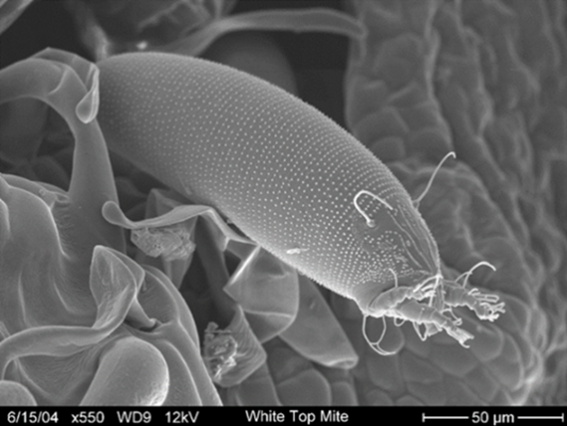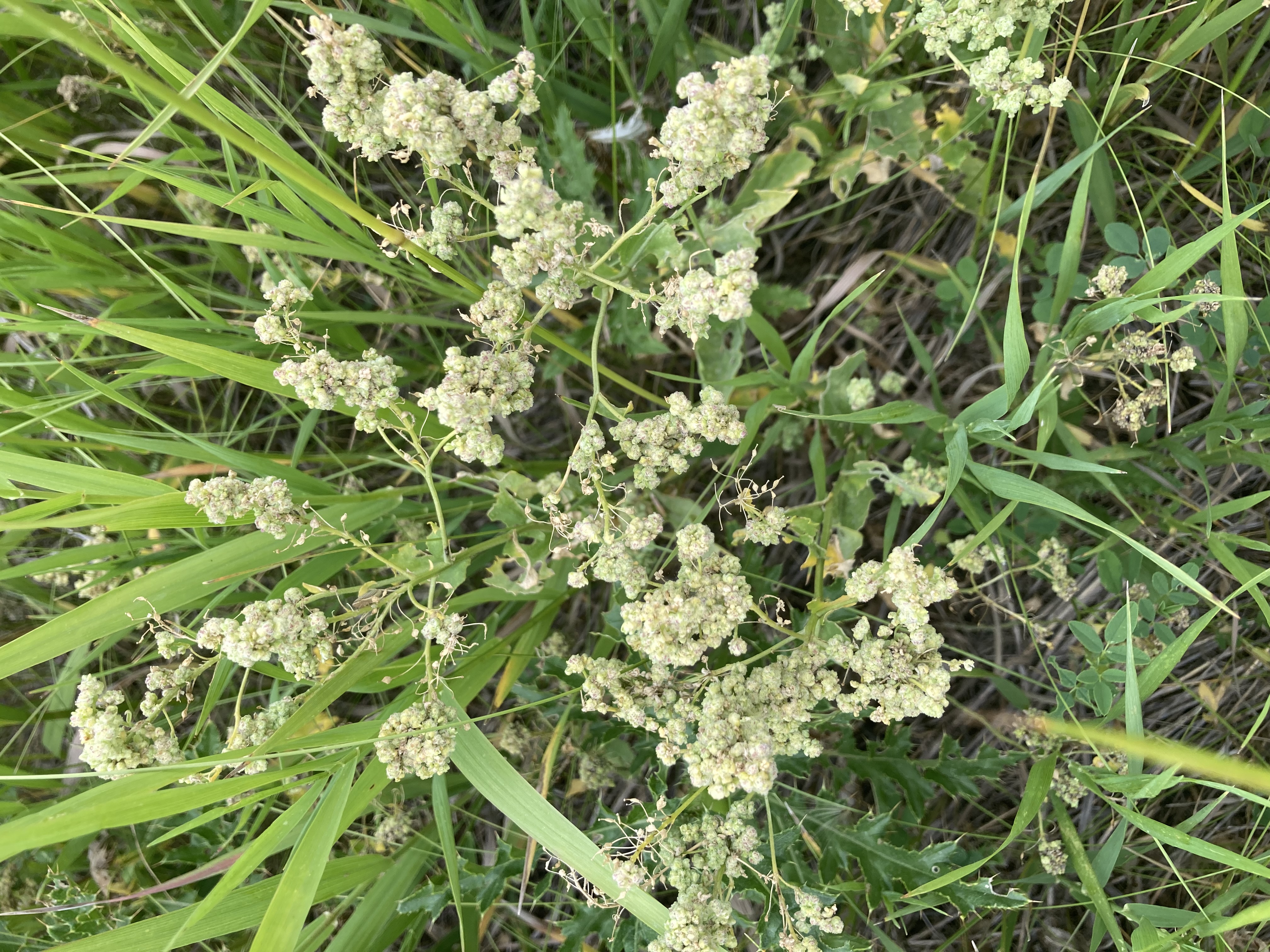A New Biocontrol Agent for Hoary Cress—A Mighty Mite?
by Dr. Jeff Littlefield, Research Scientist, Montana State University, [email protected]
Introduction
The hoary cresses are regarded as a complex of three species of which Lepidium draba (hoary cress, whitetop, or heart-pod hoary cress), and L. chalepense (lens-podded hoary cress) are most widespread in Montana. Hoary cress is considered one of the worst weeds of agriculture in several parts of the world, including Argentina, Australia, New Zealand, parts of Africa, and western Europe. Hoary cress displaces native plant species, alters natural food webs, and may increase streamside soil erosion.
Biological control of the hoary cresses was initiated in 2001, with the formation of a consortium group to fund the

Scanning electron micrograph of Aceria drabae mite. Photo: A. DeMeij, MSU.
screening of potential agents. Although most agents were or are being screened by CABI-Switzerland, sometimes in cooperation with the USDA-ARS France; one agent, a gall mite, Aceria drabae (Eriophyidae), was screened at MSU (with help from USDA-ARS Greece and BBCA, Italy). This is the only agent currently approved for release in the United States.
Rearing and Release
From 2018 to 2024, mites were reared in the MSU Biological Containment Facility for release. Since the mites are microscopic, they are difficult to work with individually; therefore gall material was used for releases. We are currently using the “tipi method” for releases, i.e. grouped stems that are tied together with gall material added to the center. We have also initiated studies using blenderized galls combined with a carrier so that we can “broadcast” mites using a blower or other methods.
Evaluation

Aceria drabae galls on whitetop. Photo: J. Littlefield, MSU.
In 2019 initial releases were made in Montana (also the first made globally on hoary cress). As of 2024, releases have been made at 26 sites. The mite has successfully overwintered and established. Galls have been observed at approximately 70% of the releases, and the status of 19% of the releases (new 2024 releases) is unknown. Only three sites have failed due to an herbicide application, heavy grazing, and unknown factor(s), probably environmental. Mites have significantly increased in the number of stems infested, as well as in the galling intensity of plants at initial release sites. Mites have also started to disperse from established release sites via wind currents.
We have begun to characterize the mite’s impact, especially on seed production and plant height. As expected, the number of seeds produced decreased with increased galling of the crown. Very few seeds were produced at higher gall intensities. A reduction in height was observed when plants were completely galled. However, the impact of galls may differ as to site location or microhabitats. We have also observed highly stunted plants at some releases. Since the mite has only been recently introduced, it is difficult to determine impacts on plant density, but standardized vegetation monitoring transects have been established to observe long-term trends.
Future Plans
In 2025 we will enlist the help of the Montana Biological Control Coordination Project to expand the release and monitoring efforts in Montana. We also plan to further define the impacts associated with this mite.
Further Information
For additional information regarding this and other biocontrol agents, see the Weed Biocontrol Fact Sheets on the North American Invasive Species Management Association (NAISMA) website.
For more information about this month's weed post, contact Extension Invasive Plant Specialist Jane Mangold. Past posts are available in the Monthly Weed Post Directory.
THis weed post is also available as a printable PDF (213 KB).
